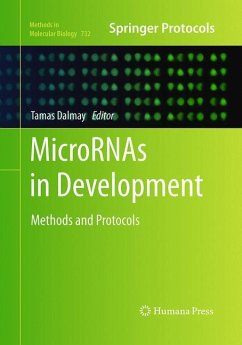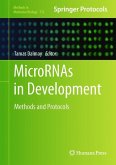Since the discovery of microRNAs, developmental biologists have striven to understand the role of miRNAs in development and disease. MicroRNAs in Development: Methods and Protocols collects contributions from expert researchers in order to provide practical guidelines to this complex study. Divided into three convenient sections, this detailed volume covers various techniques to detect and profile miRNA expression, followed by protocols to manipulate the activity of miRNAs in various organisms, and it concludes with a section that outlines different methods to identify and validate miRNA targets in animals and plants. Written in the highly successful Methods in Molecular Biology(TM) series format, chapters contain introductions to their respective topics, lists of the necessary materials and reagents, step-by-step, readily reproducible laboratory protocols, and notes on troubleshooting and avoiding known pitfalls.
Authoritative and accessible, MicroRNAs in Development: Methods and Protocols serves as a practical guide for scientists of all backgrounds and conveys the appropriate sense of fascination associated with this vital field of research.
Authoritative and accessible, MicroRNAs in Development: Methods and Protocols serves as a practical guide for scientists of all backgrounds and conveys the appropriate sense of fascination associated with this vital field of research.
From the reviews:
"Well edited book by Prof. Tamas Dalmay provides a complete (as for today !) overview of the role played by microRNAs ... . Thanks to this book I think that a multitude of readers can better understand how the genome express itself in time and space. ... gives to the scientific community a clear vision of a five dimensional world in which to investigate: the three anatomical spaces (x, y and z) plus the heterochronic and heterotopic dimensions of gene expressions thanks to the microRNAs." (Manuela Monti, European Journal of Histochemistry, July, 2011)
"Well edited book by Prof. Tamas Dalmay provides a complete (as for today !) overview of the role played by microRNAs ... . Thanks to this book I think that a multitude of readers can better understand how the genome express itself in time and space. ... gives to the scientific community a clear vision of a five dimensional world in which to investigate: the three anatomical spaces (x, y and z) plus the heterochronic and heterotopic dimensions of gene expressions thanks to the microRNAs." (Manuela Monti, European Journal of Histochemistry, July, 2011)









